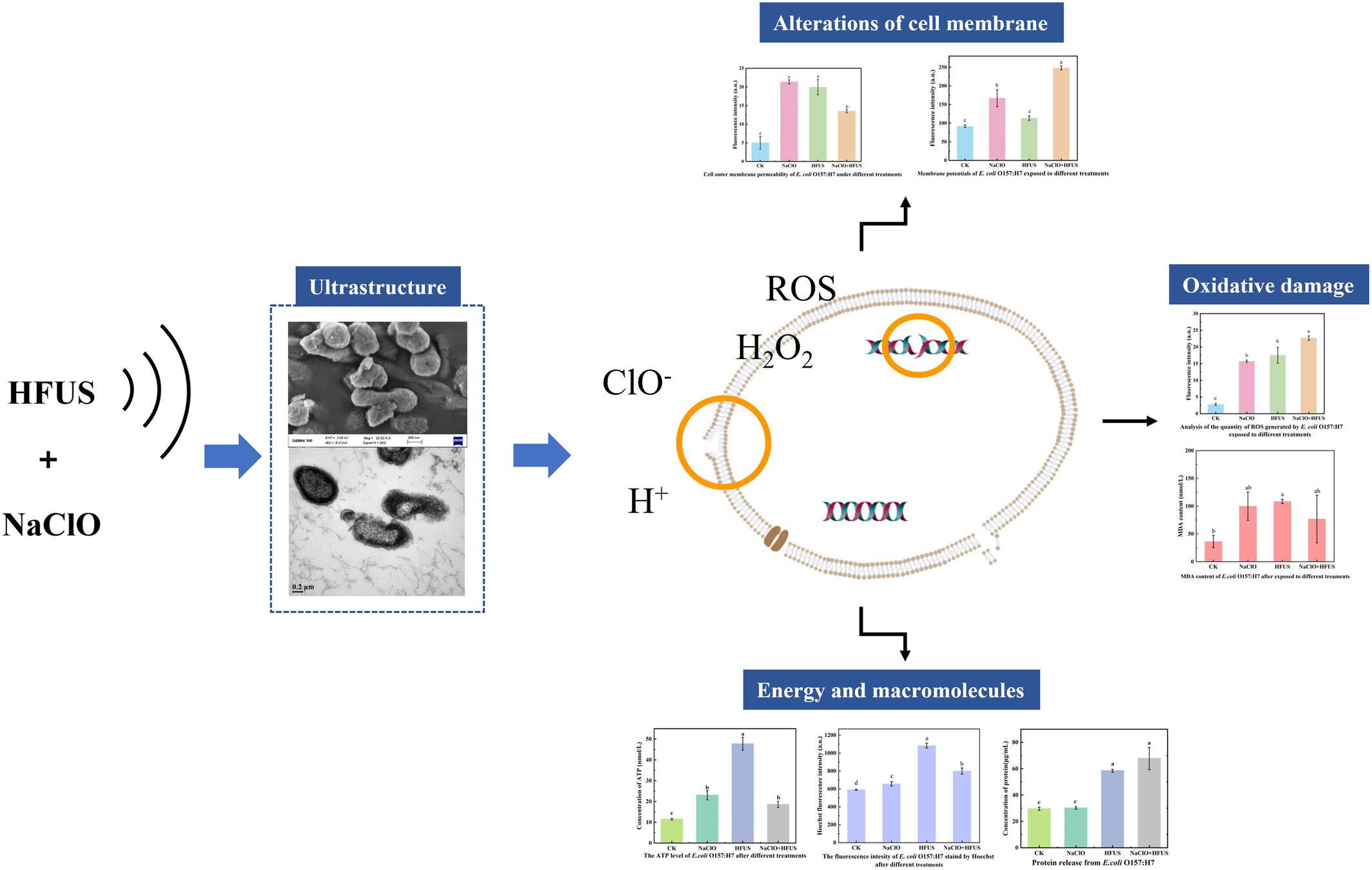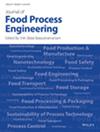Efficacy and antibacterial mechanism of high-frequency ultrasound combined with sodium hypochlorite against E. coli O157:H7
Abstract
This study investigated the synergistic effects and mechanism of high-frequency ultrasound (HFUS) combined with sodium hypochlorite (NaClO) against Escherichia coli O157:H7 (E. coli). The bactericidal effect of HFUS alone against E. coli was limited (reduced 0.14–0.30 log CFU/mL), while that of NaClO (3 mg/L) was relatively better (reduced 1.10–2.02 log CFU/mL). When combining HFUS and NaClO, the decontamination of E. coli increased as decreasing ultrasonic frequency and increasing ultrasonic power at the range of 2.16–5.76 log CFU/mL, which achieved an additional maximum 3.58 log CFU/mL-reduction (581 kHz, 167 W, 18 min) comparing to the total reduction of sole NaClO and HFUS treatments. The remarkable cell membrane damages caused by HFUS during the combined treatment were confirmed by membranal integrity, membranal permeability, and ultrastructural morphology analyses. Incredibly, as one of membrane damages, pores observed on the cell membrane could provide new channels for hypochlorous acid and hydrogen peroxide induced by HFUS to enter E. coli cells. Furthermore, those chemical substances significantly increased the reactive oxygen species (ROS) levels at a lower ultrasonic frequency and higher power, which were part of the reason for subsequent DNA damage in addition to the mechanical effects of HFUS. These results may broaden the application of high-frequency ultrasound in food sterilization.
Practical applications
There is an increasing trend toward food sterilization that prefers non-thermal processing. E. coli is a typical pathogen associated with foodborne disease outbreaks and has one of the broadest disease spectra. Ultrasound is a promising non-thermal technology due to its gentle action, simple operation, and environmental friendliness. This study combined ultrasound with sodium hypochlorite against E. coli, which obtained a remarkable synergistic bactericidal effect, making potential applications in the future food industry.


 求助内容:
求助内容: 应助结果提醒方式:
应助结果提醒方式:


